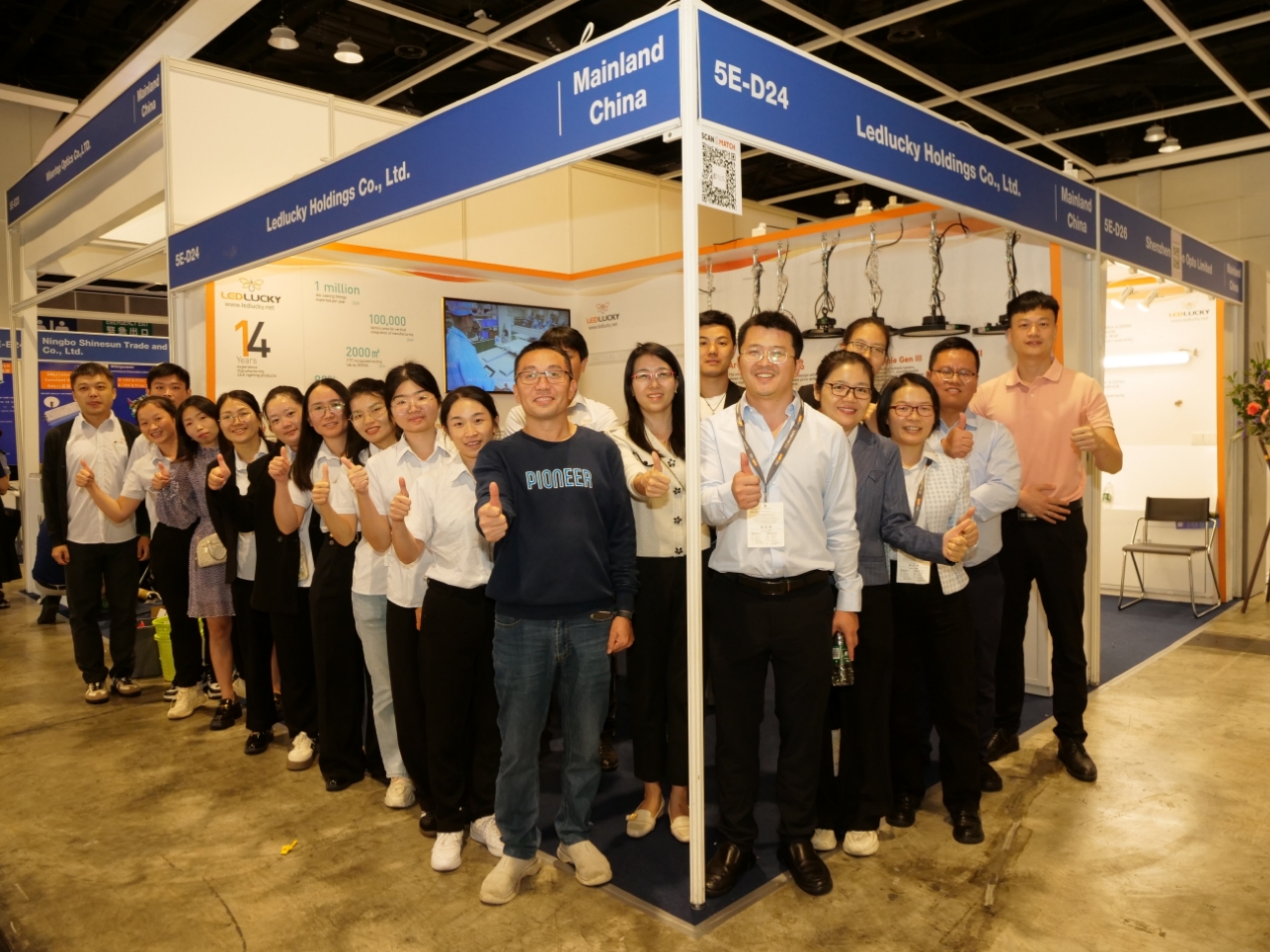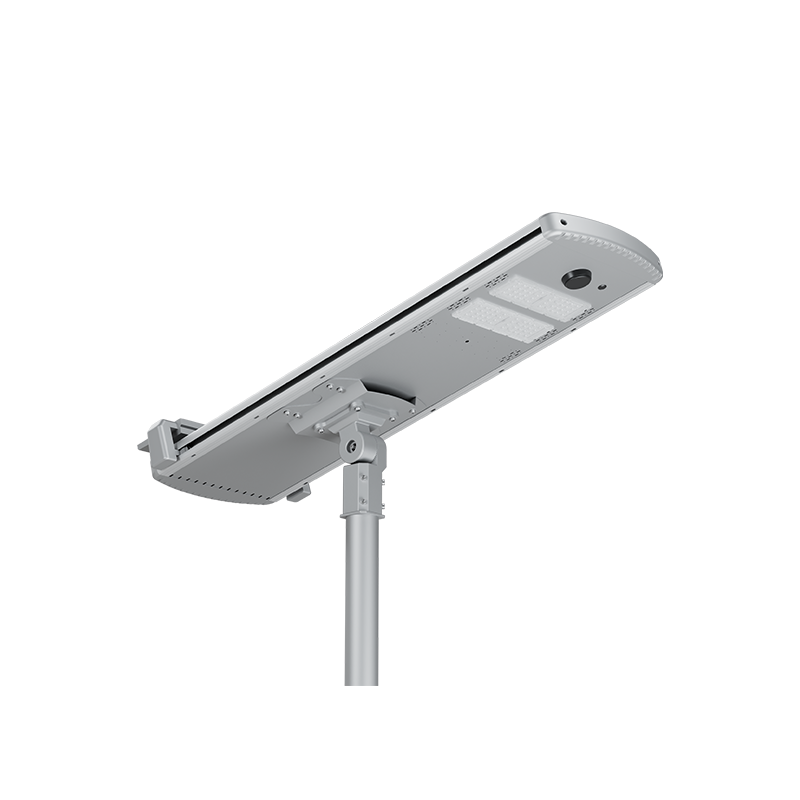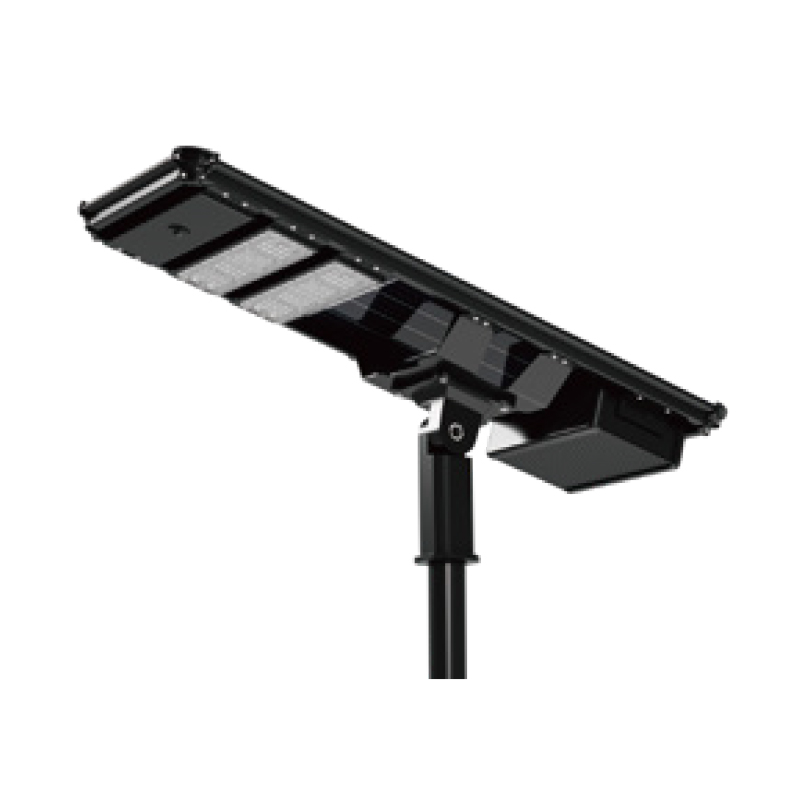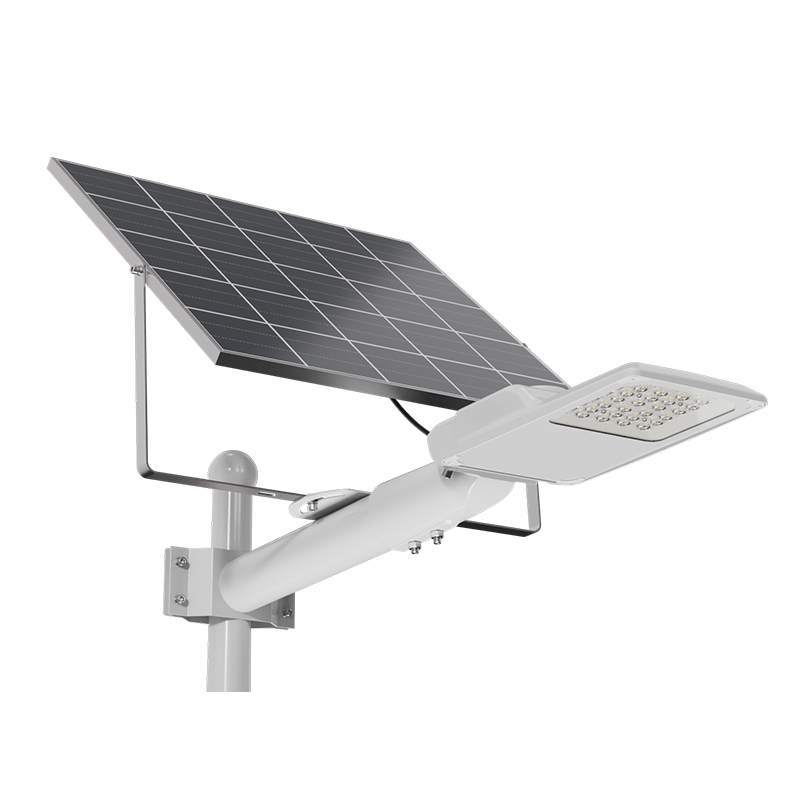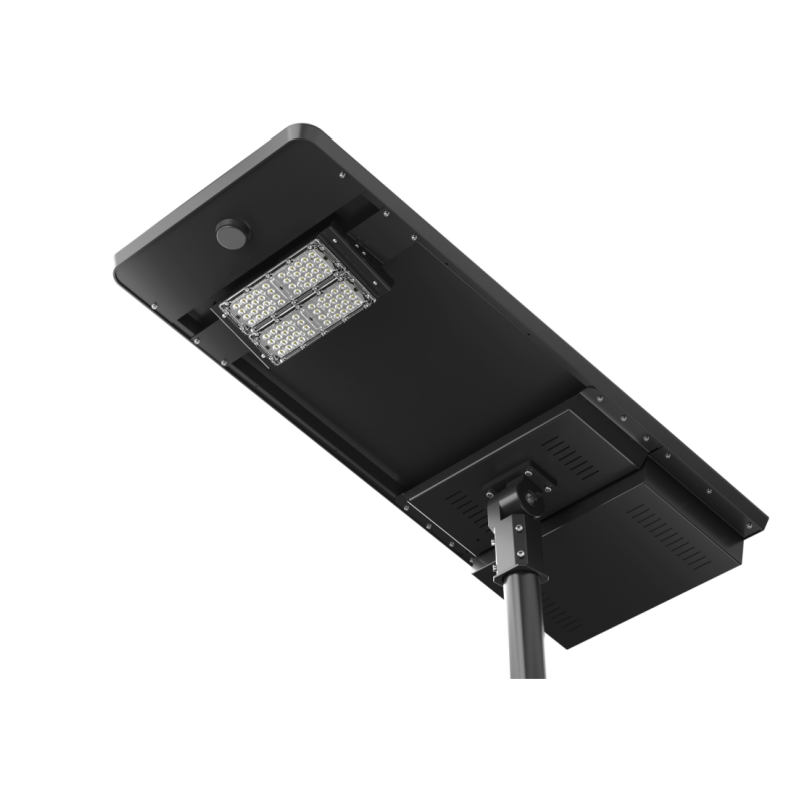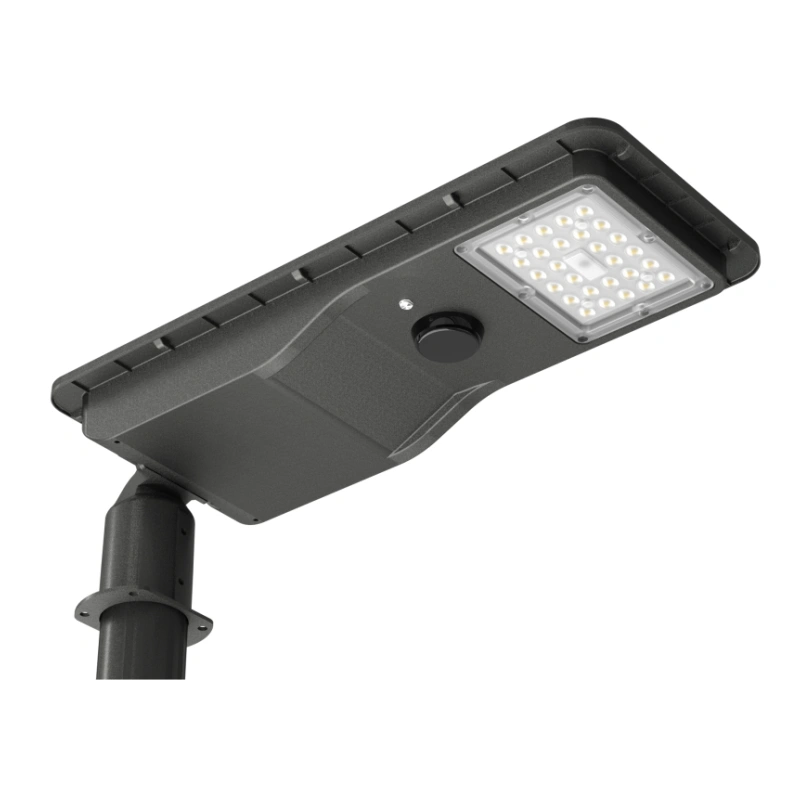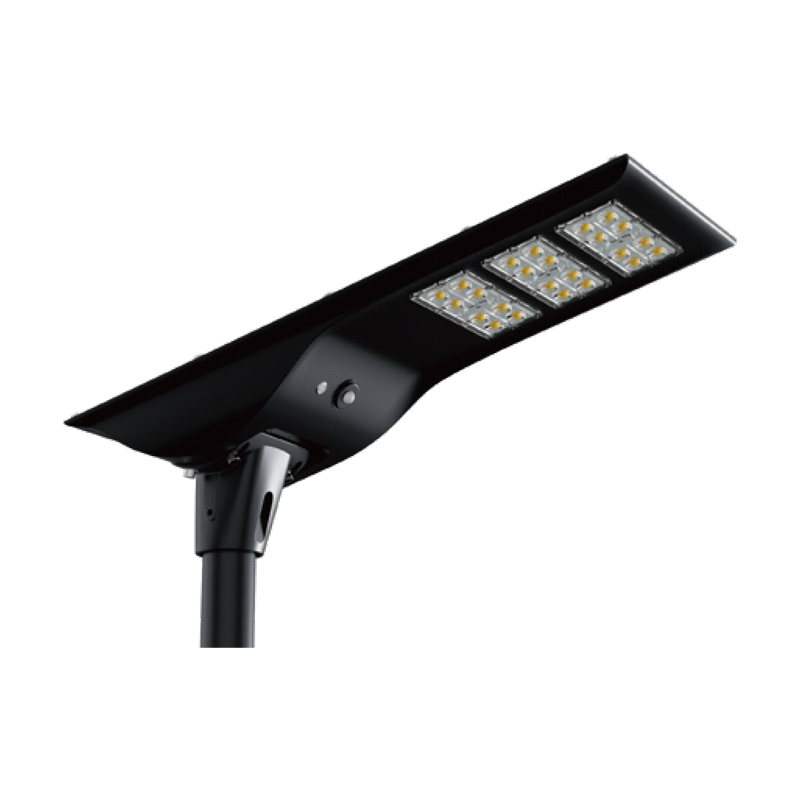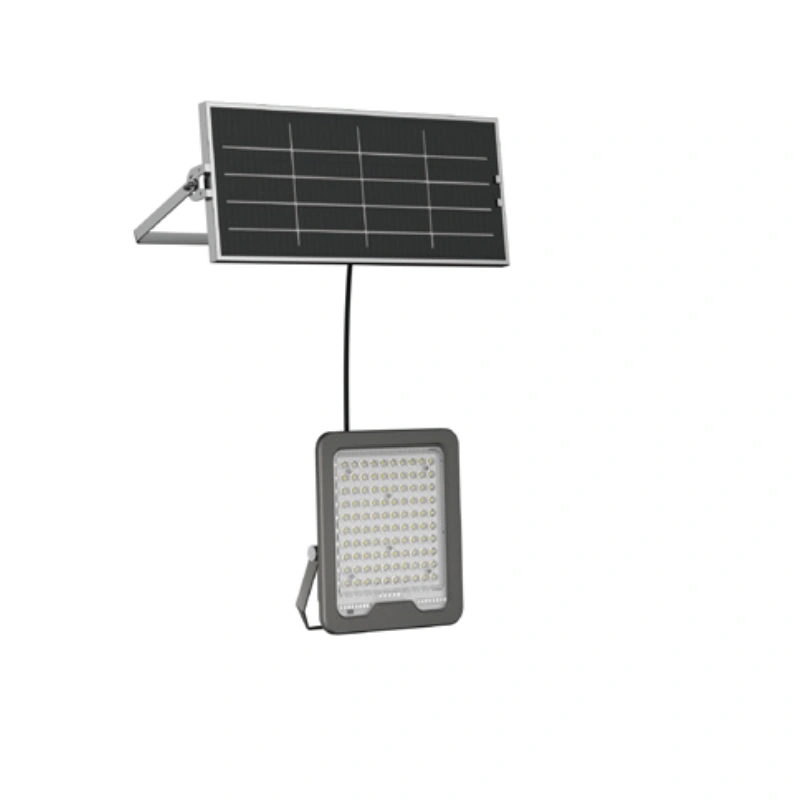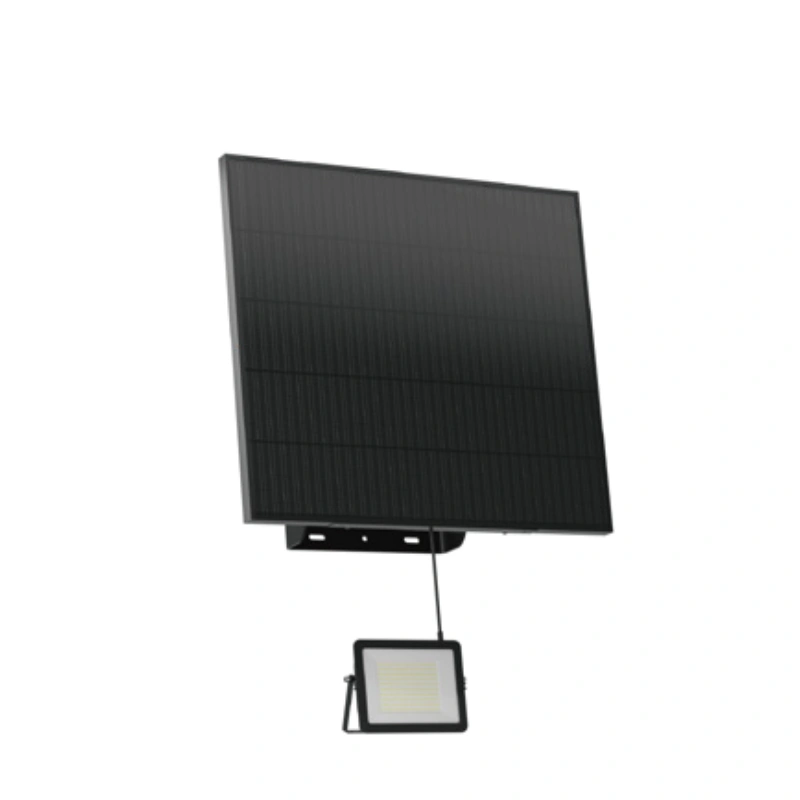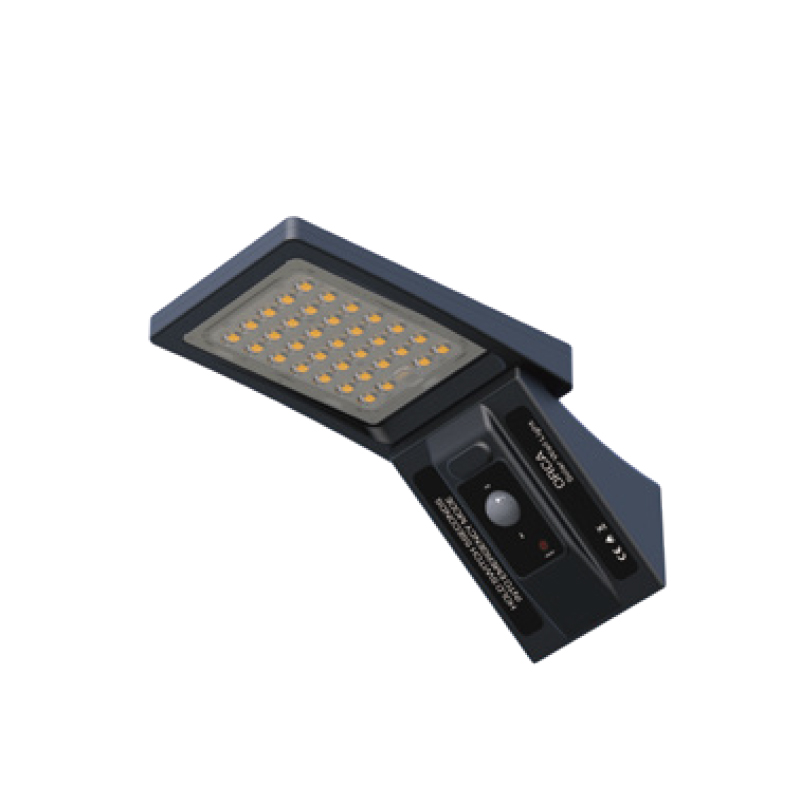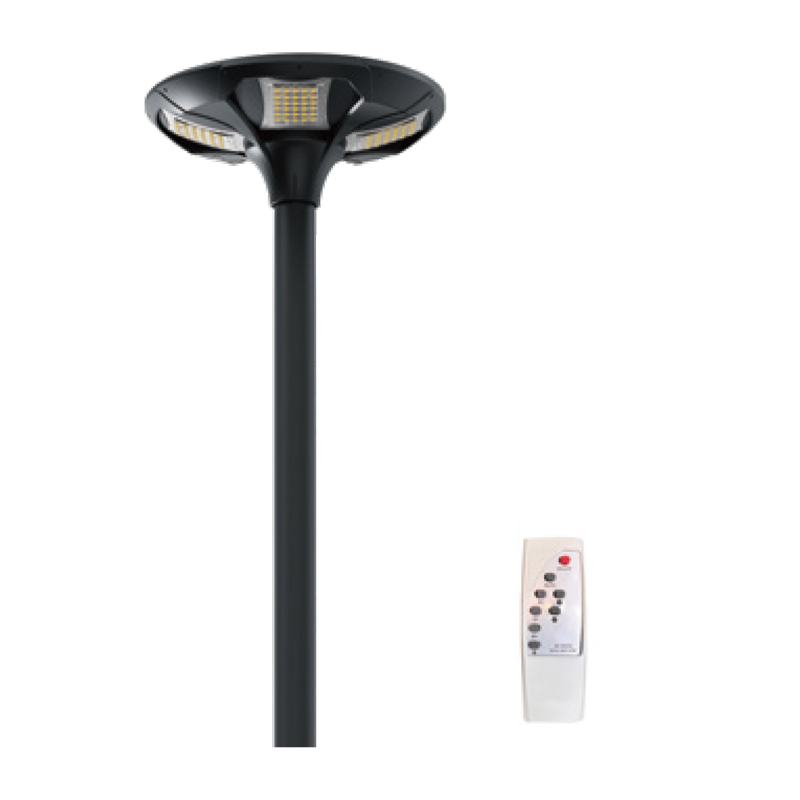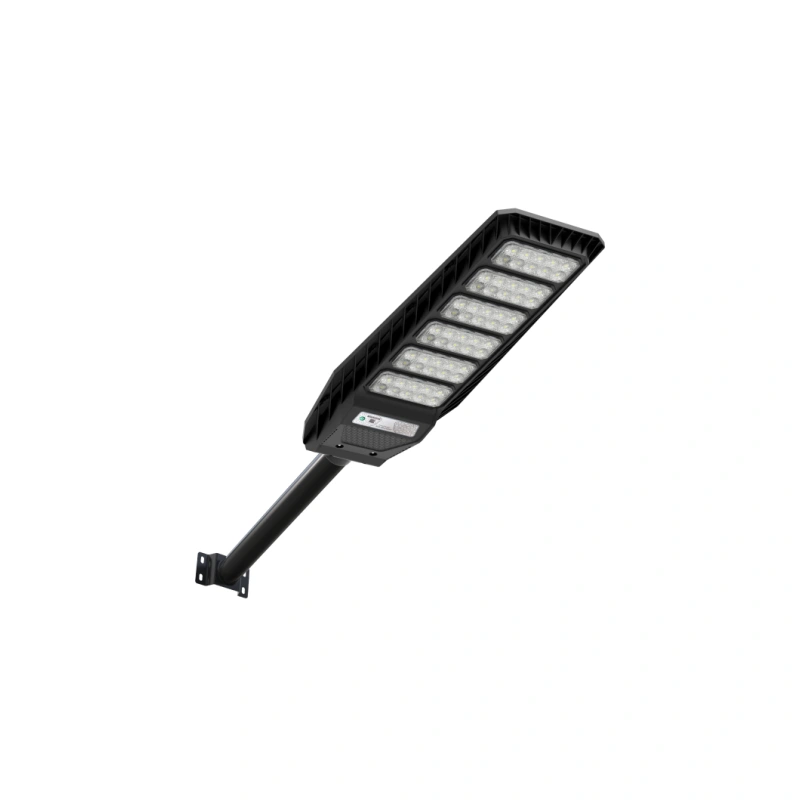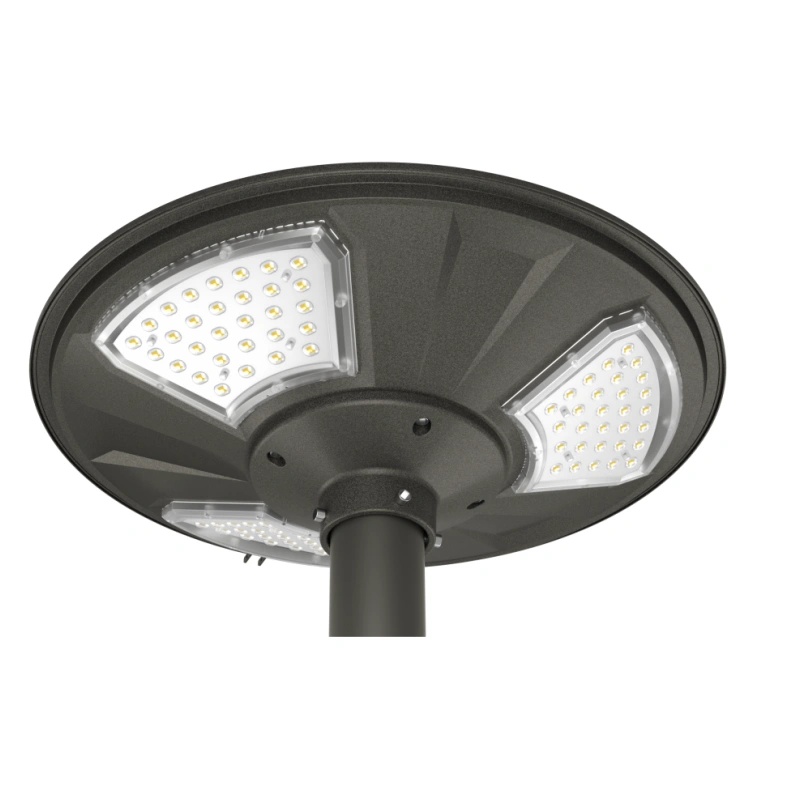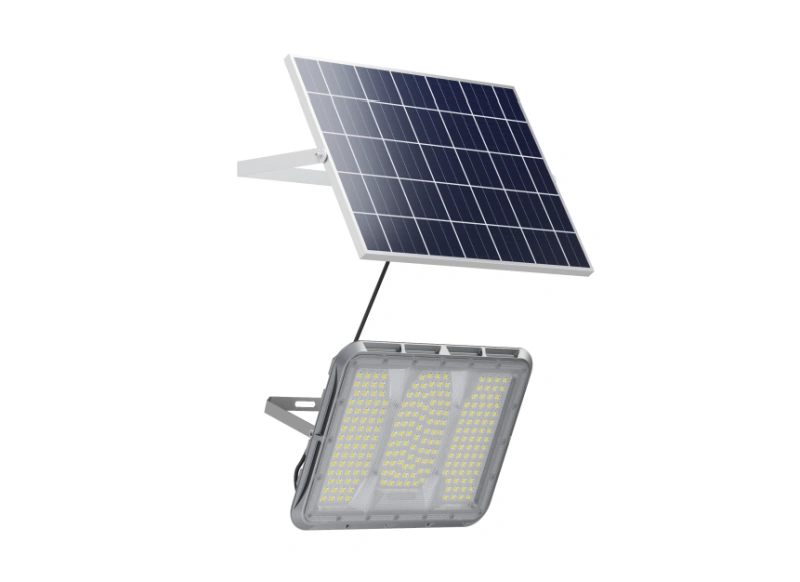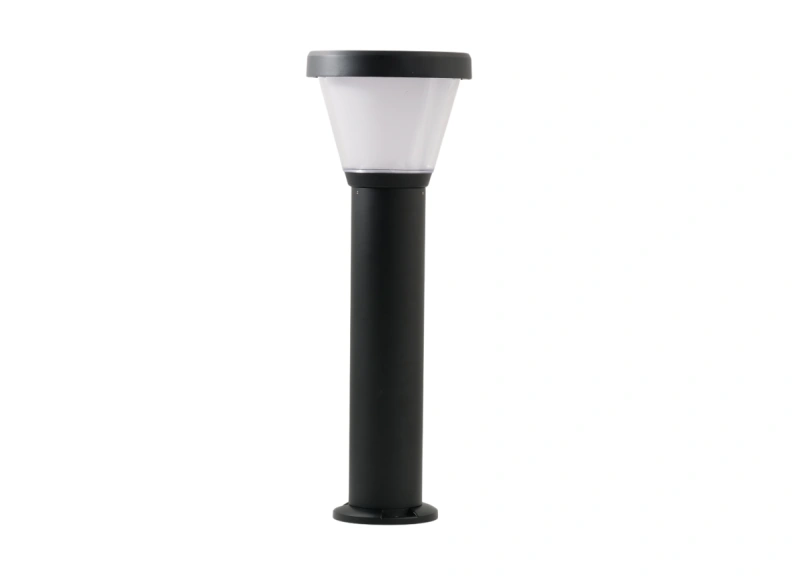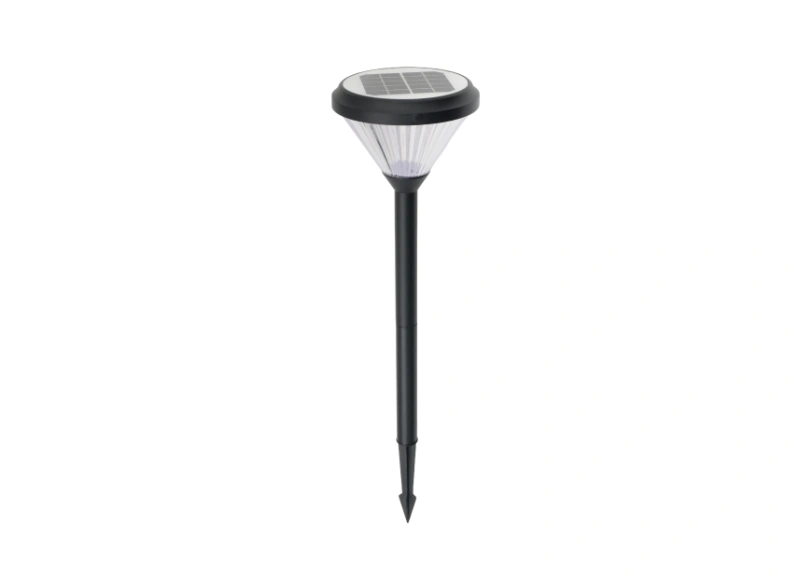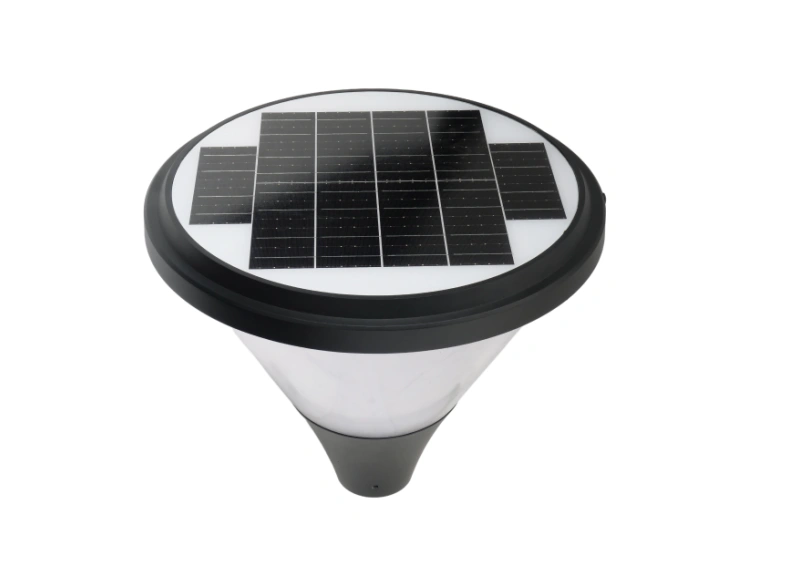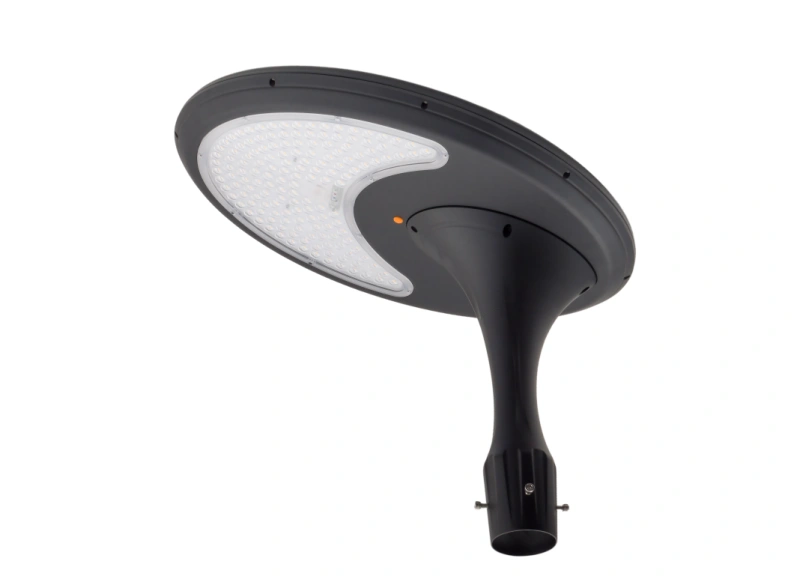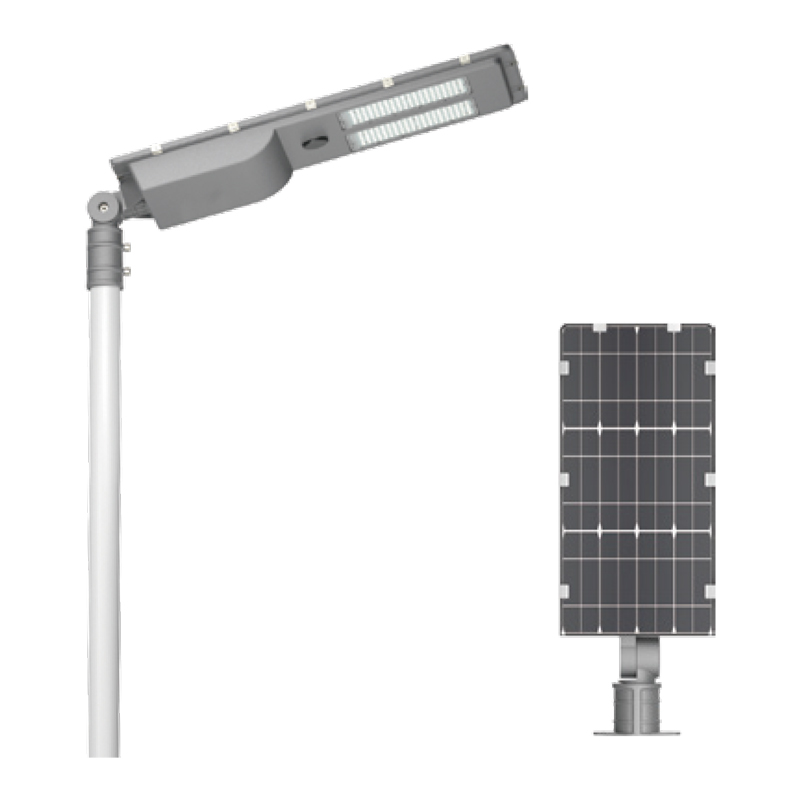Solar LED Light
- Wattage: 40W, 60W, 80W, 100W
- Lumen Output: 7,400lm~18,500lm
- Beam angle: Type II
- Control mode:Intelligent light control
The self-cleaning module operates independently with built-in solar panel and battery, without interfering with the main light. After each cleaning cycle, it parks at the lamp tail without blocking the main solar panel.
- Wattage: 25W/45W/60W/100W
- Lumen Output:4,625 - 18,500 lm
- Beam angle: Type II 140*70deg
- Light efficiency:185lm/W
- Microwave Sensor
- Intelligent light control
- No wires
All in one solar street light with a powerful built-in solar panel provides all-night lighting even on cloudy days.A beautiful aesthetic design it a wonderful option for lighting up residential or commercial places.
- Wattage: 13W/19W/25W/38W/50W
- Lumen Output: 2,080 - 8,000 lm
- Beam angle: Type II(140*70deg)
- Light efficiency:160lm/W
- Control mode: Microwave Sensor/Daylight Sensor
- Microwave Sensor
- No wires
A beautiful aesthetic design it a wonderful option for lighting up residential or commercial places.
- Wattage:20W, 30W, 40W, 60W, 80W, 100W
- Lumen Output:3,700 - 21,000 lm
- Beam angle: T2-S, T3-S
- Light efficiency:210lm/W
- Microwave Sensor
- Intelligent light control
- No wires
Intergrated bending structure more flexible to customization
Special structure design enable single LED module rotatable, and profiles with 2 inner cavities makes the luminaire more stable and reliable on performance
- Wattage: 9W, 17W, 27W,35W
- Lumen Output: 1,500lm - 6,000lm
- Beam angle: Type II
- Light efficiency:175lm/W
- Microwave Sensor
- Intelligent light control
Independent external solar panels quickly and efficiently absorb solar energy,
ensuring better battery charging and guaranteeing longer battery life.
With a high luminous efficacy of up to 175lm/W
- Wattage: 24W/35W/40W/47W/50W/60W
- Lumen Output: 4,080 - 11,000 lm
- Beam angle: Type II
- Light efficiency:170lm/W,185lm/W
- Control mode: Microwave Sensor/Daylight Sensor
Monocrystalline silicon solar panel, with a conversion efficiency of 23% and a lifespan of up to 25 years.
- Wattage: 6W, 9W, 12W, 18W
- Lumen Output: 1,000 - 3,000 lm
- Beam angle: 110deg
- Microwave Sensor
- Intelligent light control
- Infrared Remote Control
Solar floodlight with beautiful aesthetic design, which is a wonderful option for lighting up residential or commercial places
- Wattage: 6W, 9W, 12W, 18W
- Lumen Output:1,000- 3,000 lm
- Beam angle: 110deg
- Microwave Sensor
- Intelligent light control
- Remote control
Solar Floodlight offers powerful all-night lighting with its high-efficiency solar panel and long-lasting Li-ion Battery, perfect for residential or commercial spaces.
- Wattage: 55W, 85W, 110W
- Lumen Output:10,000- 20,000 lm
- Beam angle: 110deg
- Intelligent light control
- Remote control
Solar Floodlight offers powerful all-night lighting with its high-efficiency solar panel and long-lasting Li-ion Battery, perfect for residential or commercial spaces.
- Wattage: 5W, 9W, 13W, 18W
- Lumen Output: 850 - 3,060 lm
- Beam angle: 110deg
- Microwave Sensor
- Intelligent light control
A beautiful aesthetic design it a wonderful option
for lighting up residential or commercial places.
- Wattage: 3W, 4.2W, 5W, 8W
- Lumen Output: 300 - 1,000 lm
- Beam angle: Type II & 110deg
- Light efficiency:120lm/W
- PIR Sensor
- Photoreceptor
Solar charging and rechargeable battery: save electric charge, no wires.
- Wattage: 25W
- Lumen Output: 4,250lm
- Beam Angle: 130deg
- 3 years warranty(battery 2 year warranty)
- Color Temperature: 4000K, 5000K
Monocrystalline silicon solar panel, with a conversion efficiency of 23% and a lifespan of up to 25 years.
- Wattage: 100W, 150W, 200W,250W, 300W
- Lumen Output: 883lm - 3,459lm
- Beam angle: TYPE2
- Control mode: Microwave Sensor/Daylight Sensor/Intelligent light control
Illuminate the future, lead with energy-saving! This solar street light, with smart sensing, remote control, and waterproof durability, is your green choice for outdoor lighting.
- Wattage: 25W
- Lumen Output: 4,250lm
- Beam Angle: Type V
- 3 years warranty(battery 2 year warranty)
- Color Temperature: 4000K, 5000K
- Intelligent light control
This solar garden light showcases our company’s signature design: sleek, high-performing, and cost-effective. Crafted with top-notch die-cast aluminum radiator and efficient monocrystalline silicon solar panels, it promises durability and high efficiency.
- Wattage: 6W,9W,12W,18W,25W,27W,30W,35W
- Lumen Output: 1,000lm~1,600lm
- 2 years warranty(battery 1 year warranty)
- Intelligent light control
The TA series solar floodlight is an efficient and intelligent outdoor lighting solution, offering multiple power options suitable for residential and commercial areas. It is solar-powered, easy to install, and features remote control and an IP65 rating for reliable operation in all weather conditions.
- Wattage: 3W
- Lumen Output: 300lm
- Beam angle: T5-S
- Control mode: Intelligent light control
The TD series solar bollard light offers 3W power and 100lm/W efficiency, ideal for outdoor illumination. It features IP65 waterproofing, intelligent timing, and is powered by a durable lithium iron phosphate battery, with soft lighting, and comes with a 2-year warranty.
- Wattage: 1W
- Lumen Output:140lm
- Beam Angle: T5-S
- 2years warranty(battery 1 year warranty)
- Intelligent light control
The TZ series solar lawn light offers 1W power and 140lm/W efficiency, ideal for outdoor lighting. It features IP65 waterproofing, intelligent timing, and is powered by a durable lithium iron phosphate battery, easy to install, with a 2-year warranty.
- Wattage: 9W
- Lumen Output: 1,000lm
- Beam Angle: T5-S
- 3 years warranty(battery 2 year warranty)
- Intelligent light control
The TD series solar garden light offers 9W of illumination with an efficiency of 110lm/W and an IP65 waterproof rating, making it ideal for outdoor lighting. It features intelligent timing control, powered by a durable lithium iron phosphate battery for long-lasting performance, and comes with a 3-year warranty.
- Wattage: 22W
- Lumen Output: 3,600lm
- Beam angle: T2-S
- Control mode:Intelligent light control
The TM series solar garden light offers 22W of illumination with an efficiency of 160lm/W and an IP65 waterproof rating, making it suitable for outdoor use. It features an efficient aluminum heat sink for quick cooling and a long-life lithium iron phosphate battery, supports intelligent timing, and is easy to install, with a 3-year warranty.
- Wattage: 12W/18W/20W/24W/ 35W/45W/47W
- Lumen Output: 2,040 - 8,325 lm
- Beam angle: Type II(140*70deg)
- Light efficiency:170lm/W,185lm/W
- Control mode: Microwave Sensor/Daylight Sensor
- Intelligent light control
Monocrystalline silicon solar panels with a conversion efficiency of up to 23% and a lifespan of up to 25 years.
Customize Solar LED Lights For Your Business? Contact US Now!


